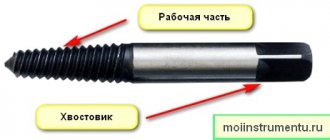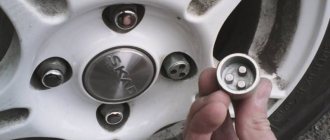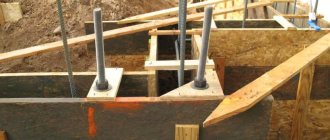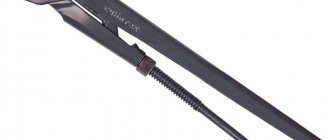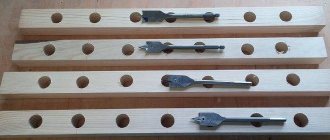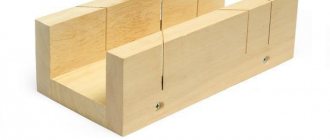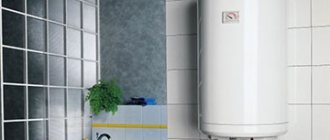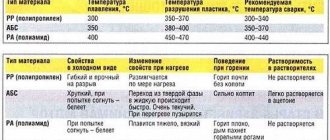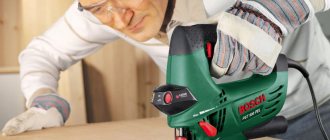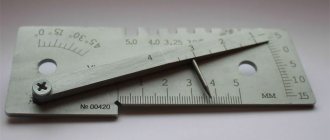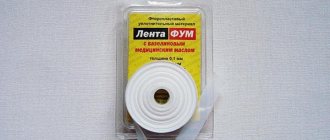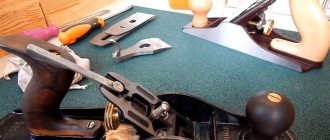There are often cases when, through negligence, without calculating the effort, or due to the poor condition of the fastener, it breaks. It’s good if the tip remains above the surface. Then pliers or pliers will help. But most often the most inconvenient thing happens - the body of the bolt or screw remains deep inside the housing. Many tried and tested methods may not save the situation. In this case, a special device will help out - an extractor.
What is an extractor - design and types
An extractor is a useful tool that is designed to remove deformed threaded connections. Structurally, the tool is a bit or punch, which consists of two parts:
- Working - has a wedge-shaped thread, which is cut to the left (for fasteners with a left-hand thread, devices with a right-hand thread are used)
- Shank - hexagonal or tetrahedral shape, which is needed to connect an additional tool - a wrench, die holder or screwdriver
Manufacturers produce extractors of different sizes, which is important, since threaded connectors have different diameters. That is why extractors are sold in sets, which allows you to use a suitable attachment if necessary, when you need to unscrew a broken bolt. The most popular sizes of extractors are from M1 to M16.
The devices differ in design, and they are:
- Wedge-shaped - they have the shape of a cone without threaded edges.
The principle of their operation is that a hole is drilled in the stuck part of the bolt. The diameter of the drilled hole should be such that the extractor engages tightly with the stuck bolt. The nozzle is lightly driven into the drilled hole, and then the stuck bolt is unscrewed using a wrench. The tool is easy to use, but to achieve a positive result, you should drill a hole in the stuck bolt strictly in the center. Misalignment of the hole can cause the tool to break. - Spiral or threaded - have wedge-shaped rods with threaded or spiral edges.
The difference between spiral and threaded ones lies in the reliability of engagement. The principle of operation of such devices is that a hole is first drilled in the stuck fastening joint, and then the extractor rod is screwed in a counterclockwise direction. After the rod is securely engaged, the stuck bolt is unscrewed. If a bolt with a left-hand thread is stuck, then it is necessary to use extractors with cutting edges in the right direction, that is, vice versa - Rod - have a shortened shape of the working part, which consists of straight edges and with perpendicular slots.
Rod-type extractors resemble taps for cutting threads on nuts. The operating principle of such devices is also similar to taps. A core is used to make a mark in the center, after which the rod extractor is screwed in in a counterclockwise direction. As soon as the edges of the nozzle engage with the stuck bolt, jamming occurs and then it is unscrewed
The most popular are the spiral type models. For the manufacture of devices, high-strength alloy steel is used, which is why the cost of the tools is appropriate. Wedge-shaped extractors are the cheapest, but they are not effective in the following situations:
- When there is no space to drive a wedge into the hole
- When blows with a hammer can destroy the integrity of the entire device into which the broken bolt is screwed
Spiral devices eliminate the disadvantages of wedge-shaped extractors, however, to use them, a hole must first be drilled. If the broken bolt is in a hard-to-reach place and it is impossible to get to it with a drill, then rod extractors are used. Rod devices have hexagonal shanks for mounting in a drill or screwdriver chuck.
This is interesting!
It should be understood that extractors are used in the most extreme cases, when the head on the bolt is torn off flush. If the edges of the head are licked off, then you can unscrew the bolt using special clamping pliers - a hand vice.
Classification and design
To unscrew old bolts and studs with broken heads, you can use one of three types of extractor.
Wedge-shaped rod - has the shape of a faceted cone. It is hammered into the prepared hole in the end, wedged and unscrewed. The wedge extractor is easy to use, but requires precision in drilling the center hole to extract effectively. Once completed, it can be difficult to remove the extracted part from the turnout.
What are extractors used for and what fasteners can be unscrewed with them?
The design of extractors is described in detail, but for what purposes can such cutting attachments be used? The devices in question are used for unscrewing any types of fastening connections - aluminum, steel, plastic, hardened and other types of bolts, self-tapping screws. It is very difficult to drill a hole in a hardened bolt, so to make the work easier, you should heat it and temper the metal.
Extractors are used to remove broken bolts from the following parts:
- From a car engine block - and this applies not only to outdated car brands, but also to modern foreign cars. When assembling a vehicle, defective parts are encountered, which are identified directly by the vehicle owners. When dismantling the engine block, a set of extractors will help you unscrew a bolt with a torn head.
- From the car hub - not all car models use nuts to tighten wheels, but also bolts. When tightening or unscrewing the bolts that secure the wheel, the cap can be torn off. This unpleasant situation can be solved by using extractors, without the need to replace the hub
- From the valve cover. Often the bolts remain in the valve covers and cylinder head, which can be removed using a set of extractors. Car owners are advised to acquire such an indispensable tool as extractors for unscrewing broken bolts
- From a concrete wall. You've probably encountered a situation where, when screwing a self-tapping screw or mounting bolt into a wall, it becomes deformed. Such malfunctions can be solved simply by using an appropriately sized extractor.
- Ignition switch in a car - when it becomes necessary to replace the ignition switch on a car along with the mounting frame in which it is installed, this is problematic. The steel frame of the ignition switch is secured with special disposable bolts (vandal-proof). To unscrew them, you will need to use extractors.
- Damage to the spark plug - when unscrewing, this part on the car can be damaged. Such cases, although rare, are quite appropriate. To unscrew the remainder of the broken spark plug, you should use an extractor. The task is complicated by the design of the engine, since on most modern cars the spark plugs are located in the shafts
- Small bolts - often when repairing phones, laptops and tablets, a problem arises when one of the remaining screws refuses to unscrew. It is impossible to find such a small extractor, since they are not produced. There are several current methods to solve the problem. The first is to use a thin drill bit. A through hole is drilled in the screw, after which the fastener can be removed. The second is to glue the screwdriver blade with epoxy glue, after which hardens, unscrew the fastener. In this case, it is imperative to use high-quality resin glue
Depending on the size of the fastening joints, it is necessary to select extractors of appropriate diameters. The price of extractors is affordable for everyone, but those who like to save money need to be careful, as cheap Chinese analogues are of unsatisfactory quality. Already the first time they are used, the threaded edges are licked off. The situation is even worse when part of the nozzle remains in the drilled hole of the remaining part of the bolt. In this case, the ability to unscrew the rest of the bolt becomes more difficult.
Tool structure
The basic principle of operation of the tool is to dislodge defective fasteners from the hole. To do this without losing the quality of the existing threads, you need to place the bolt extractor inside and turn it all the way so that the chip falls out. Therefore, firstly, in the set for unscrewing broken bolts there are different diameters to choose the most suitable one. And secondly, the device has edges or threads for displacing debris from the hole.
For ease of use, the tool for unscrewing broken bolts has edges on the opposite end for better grip with a special bushing or pliers. And the length is chosen in such a way as to remove residues with minimal damage to the thread.
How to use extractors or a simple way to unscrew a damaged bolt
Knowing what types of devices in question there are, it remains to understand the question of how to use them correctly. The process of using different types of extractors to unscrew broken bolts has already been briefly described above. Below is a detailed step-by-step description of how to use the tool:
- Prepare the necessary tools and materials - punch, set of extractors, hammer, drill and metal drills
- Using a center punch and hammer, mark the center on the remaining part of the bolt. This point should be given special attention, since not only a positive result depends on it, but also the serviceability of the extractors used. In addition, if you incorrectly mark the center of a damaged bolt, the thread can be damaged during the drilling process.
- After marking, you need to use a drill with a drill of the appropriate diameter. The choice of drill requires an appropriate approach. The drill must be smaller than the diameter of the bolt to avoid damaging the thread. It is recommended to start drilling with a small diameter drill
- The depth of the hole depends on the size of the thread. If the damaged bolt is short in length, then it is enough to drill 10-15 mm
- An extractor is installed in the hole. This may be a wedge-shaped or spiral element. The wedge-shaped one is hammered into the hole until it stops, and the spiral one is slightly compacted in the hole with a hammer, and then screwed in with a knob or die holder. The nozzle must be rotated to the left or counterclockwise
- As soon as the nozzle goes all the way, it will begin to unscrew the remaining part of the mounting bolt. When rotating the attachment, make sure that it is parallel to the direction of the broken bolt.
- After unscrewing the broken part of the bolt, you need to fix it in a vice and unscrew the extractor in a clockwise direction
As you can see, this procedure is not difficult and does not require special skills, with the exception of special equipment. In addition, you can unscrew a broken bolt in this way if it is in a visible and accessible place. However, bolt heads often come off where they are difficult to reach, so it all depends on the situation. How broken bolts are unscrewed using extractors is shown in the video below.
How to use it correctly?
Unscrewing a jammed bolt using an extractor is not that difficult. It is enough to follow a certain order of work. To mark the surface of the metal in a damaged bolt, you need to prepare a center punch and a hammer. It is important to strictly observe the alignment of the product and pay attention to its correct positioning. Having placed the mark, you can proceed to drilling; the diameter of the future hole should correspond to the size of the working part of the extractor.
If you have a set of tools, it will be easier to cope. If you don't have one, you can simply use a guide bushing to ensure the drill is centered. It is necessary to work carefully, without significantly deepening the drill. Next, you can install the extractor, knocking it deeper with a mallet and hammer. Depending on the design of the product, a wrench or a special tap driver will help to screw the tool in deeper.
As soon as the stop is reached, you can proceed to the next stage - unscrewing the broken bolt or stuck stud. To do this, the tool is rotated in the direction of the axis. It is important to maintain the specified alignment; if it is displaced, the extractor may break. After the bolt is unscrewed, it is carefully removed, being careful not to damage the tool. The easiest way to remove the bolt from a screw extractor is to use pliers or a wrench. This is a basic, universal technique, but it may not be suitable if the piece of hardware is located non-standardly, in which case you should act individually.
The extractor itself should also be prepared for work. Before starting it, you need to align the grooves of the tap and the tool guides, move until the stop is reached. After this, the sleeve moves towards the surface of the part. An adjustable wrench or wrench is attached to the tail part of the extractor. Upon completion of removing the hardware from the tip, you need to remove its fragment - to do this, use a vice and a wrench, rotating the tool clockwise.
The most common difficulties are worth considering in more detail.
- The bolt is broken below plane . With this arrangement of the damaged hardware, a bushing corresponding to the diameter of the hole is installed in the recess above it in the surface of the part or product. After this, drilling is performed to the desired depth; if necessary, you can start with a smaller diameter and gradually increase it. Next, you can drive or screw in the extractor.
- The fragment is located above the plane of the part. The sequence of work will be similar - first a suitable bushing is installed, then core punching or drilling is performed. The extractor is placed only in the prepared hole in the body of the bolt, with sufficient depth.
- Broken on plane . The work is carried out in 2 stages. First, the upper part of the broken hardware is removed, then all steps are repeated for the element remaining inside the hole. There is no need to rush. Precise markings, preliminary core punching, and the correct choice of extractor for the job will help you correctly remove a cracked bolt.
There are a number of useful techniques that can help you cope with the task of removing a broken bolt faster and more efficiently. Among them is heating the bolt or stud in the hole. Under the influence of thermal expansion of the metal, things will go faster. If the screw thread is torn off, a regular hexagon wrench - a wrench placed on the part of the hardware sticking out above the surface - can solve the problem. Before using the extractor, it will be helpful to apply lubricant to the surface of the bolt. A stuck, rusted bolt in a connection can be treated with acetone or another solvent so that it can more easily come away from the thread walls. If this does not help, the hardware remains motionless, you can lightly punch it and then knock it with a hammer. You need to apply force at several points - at least 4 places.
When working with a tool, it is important to select it correctly. For example, wedge-shaped extractors cannot be used on materials of increased fragility. Even a steel part can become deformed under shock load. Rod options are universal, but rarely come on sale. When working with spiral screw extractors, it is necessary to pre-drill a hole; if this is not possible, it is worth choosing a different type of tool from the very beginning to remove damaged bolts.
To learn how to properly use extractors to unscrew broken bolts, see the following video.
Causes of bolt heads breaking
If you are faced with a situation where the head on a bolt is torn off, then the first question that arises is what to do? Few people are interested in why this happened; the main thing is to find a way out of this situation. How to unscrew a broken bolt with an extractor is described in detail above, so it is imperative to find out what causes such consequences. By knowing the reason, you can prevent such situations from occurring in the future. The reasons for breaking off bolt heads are as follows:
- Sticking - happens when the part experiences strong temperature loads
- Corrosion is the most common cause that has been combated for centuries. A rusty bolt is very difficult to unscrew, and almost impossible, depending on the degree of corrosion
- Low quality. Increasingly, low-quality products are found that deteriorate not when unscrewing, but even at the screwing stage. You need to beware of such products, otherwise you will need to use extractors often
- Wear - threaded connections experience various loads, including mechanical ones. For example, if you fasten a wheel on a car with one bolt, then the cap will break due to the impact of a heavy load.
- Rotation in the wrong direction to unscrew - standard fasteners are screwed to the right side and unscrewed to the left, but there are also non-standard devices. They have a reverse thread direction, which you need to know, otherwise an attempt to unscrew the bolt will result in licking the edges of the head or its breakage
- Incorrectly selected wrench - in this case, the edges are licked off rather than the head being torn off
Most of these causes can be eliminated. Make it a rule to lubricate all types of threaded connections with lubricants. This will eliminate the possibility of sticking and corrosion of connections. Never use low quality bolts, as today's savings will result in even greater costs tomorrow.
This is interesting!
In any case, no matter how it happens, if it turns out that when you unscrew the bolt, its head comes off, then do not rush into action. Consider your options carefully. What other methods are there for unscrewing broken fasteners are described below.
Conventional twisting methods
All cases of breakage of fasteners can be divided into three types. It depends on them which tool and method of troubleshooting will be chosen. As a rule, bolts break:
- Protruding above the surface.
- Level with her.
- Deep inside.
In the first case, the problem of unscrewing is solved by using any clamping device: pliers, vices, clamps. The protruding piece is picked up and carefully turned out. If the protruding part is not long enough to hook, the end is sawed with a grinder or a hacksaw. It looks like a slot where a screwdriver is inserted, and the remainder is removed. For reliability, you can try to cut a cross-shaped slot.
Another method requires the use of a drill. The protruding fragment is cut off with a grinder, the surface is polished and a hole is marked in the middle using a core. A drill is selected and the broken bolts are drilled out to a depth of at least two diameters of the fastener. Using an old triangular file driven inside the hole, the broken bolt is unscrewed.
If none of the similar methods save the situation, you will have to turn to a special tool - an extractor.
Other ways to unscrew broken bolts or how to do without an extractor
The method of extracting fasteners with a torn head using an extractor is the most reliable and effective, but its disadvantage is that not everyone has such tools. Of course, it is recommended to buy them and always have them in the garage, but if they are not there and you urgently need to unscrew a stuck bolt, then there are other ways to do this. Let's look at them in detail.
- How to unscrew a self-tapping screw with licked edges under a screwdriver - there are two ways.
The first method is to use thick fabric or rubber, which should be used as a spacer between the head and the screwdriver. Pressing the screwdriver tightly, you must try to unscrew the screw.
The second method is to use a mini grinder. With its help, you need to make a longitudinal groove on the surface of the head (cut a new edge for a screwdriver), and unscrew the fastener - How to unscrew a screw with damaged edges on the head.
If the screw has a protruding head, then it is recommended to use special clamping pliers. This tool is also suitable for bolts that have licked edges. The cap is tightly fixed with pliers, after which the part is unscrewed - If the cap on the fastener is torn off - when there are no extractors at hand, then you will need to use a welding machine.
Using welding, it is necessary to carefully grab the stuck part, and then unscrew it. This method was used before extractors appeared. If the size of the remaining part of the bolt allows you to drill two holes, then another method is used. Two holes are drilled into which two nails are inserted. Using pliers, you can unscrew the remaining part of the threaded element, but provided that the thread is not rusted - If the cap is torn off, but part of the fastener protrudes.
In this case, you can use clamping pliers or a pin driver.
The decision to remove the remaining part of the threaded device must be made depending on the current situation. You should also know that there are no hopeless situations, and as a last resort, you can always drill out the remaining part of the broken fastener and cut a new thread. However, remember that this is the most extreme case.
Methods for removing broken bolts
So, the extraction process will directly depend on where exactly the fragment is stuck.
- In the case when the bolt breaks at the same level with the surface of the object, to remove it you will need an additional tool for marking the central holes, called a center punch. With its help, you can accurately mark a place in the center of the broken part for further drilling. After marking, a hole is drilled into which the extractor rod is then inserted, after which the fragment of the part is quietly unscrewed.
- When the bolt is broken below the surface level of the object, to remove it you will first need to insert the guide sleeve, which is included with the tool kit, into the resulting recess. Then you need to make a deep hole in the stuck part using a drill. If the diameter of the stuck bolt turns out to be very large, you should first use a small drill. A rod of the required size is inserted into the resulting hole and driven in with a hammer. Then the bushing itself is installed and the bolt is unscrewed.
- If the fracture site of the part is above the level of the fastener, then a guide sleeve is first installed, after which a recess is made in the stuck bolt. A rod is inserted into the resulting recess and a piece of the bolt is unscrewed.
Working with bolt extractors is quite simple, and no special skills are required at all. The only thing you should always remember is that you need to drill the hole strictly in the center to avoid displacement in any direction. Otherwise, problems may arise with removing the broken part.
Useful recommendations from experts on how to unscrew a broken bolt
If an attempt to unscrew a threaded connection is unsuccessful, then there are some useful tips and recommendations from experts that will definitely be useful to anyone who is faced with such an unpleasant situation. These tips are as follows:
- To increase the efficiency of the actions carried out, it is necessary to heat the threaded connection
- Using a hammer and a punch set at a 45 degree angle will help remove the remaining part of the broken bolt.
- It is necessary to use lubricants, including WD-40 lubricant, to remove corrosion
Experts also recommend purchasing a set of extractors. They are sold in quantities of 4 or more nozzles of different sizes. Having the appropriate attachments available, you can always quickly remove the deformed part of the bolt. The video below shows why you should buy only high-quality extractors and avoid low-quality and cheap devices.
Useful tips
In order for the process of unscrewing stuck fasteners to be as fast and efficient as possible, you need to follow certain rules.
- It is always necessary to use cutting oil to significantly increase the life of the extractors.
- To make it easier to remove a stuck screw or bolt, it is enough to slightly heat the stuck product before using the extractor.
- The use of drills with reverse threads greatly simplifies the process of unscrewing stuck debris.
- If the thread of a stuck part has been torn off, then it is best to use a six-sided wrench to unscrew it.
- Before starting work, it is best to first lubricate the broken part with any lubricant, such as solvent or oil.
- When using a drill with reverse rotation, you can pull out a stuck part without an extractor. However, this option may not work, so if you are not sure that everything will go smoothly, it is better not to risk it and use the extractor right away. Otherwise, the situation can significantly worsen.
- It is recommended to always wear safety glasses when working with the extractor. This is due to the fact that when working with metal, the extractor can be damaged or broken, and parts of the broken tool can fly away in different directions and get into your eyes.
- If it was still not possible to pull out the broken element, you will have to re-make a hole of a larger diameter and cut the thread.
- If you use a hammer and a core, you can move the stuck part a little and then pull it out. To do this, you need to place the bench core at an angle of exactly 45 degrees right at the base of the broken part. After this, hit it with a hammer in a circle, in four different places (counterclockwise). If you do everything correctly, the part should loosen and stretch out calmly.
The bolt extractor is a really handy tool that does an excellent job with metal hardware, bolts, screws and studs. However, it can only work in conjunction with a drill or at least a screwdriver. The extractor itself will not help remove the stuck part.
